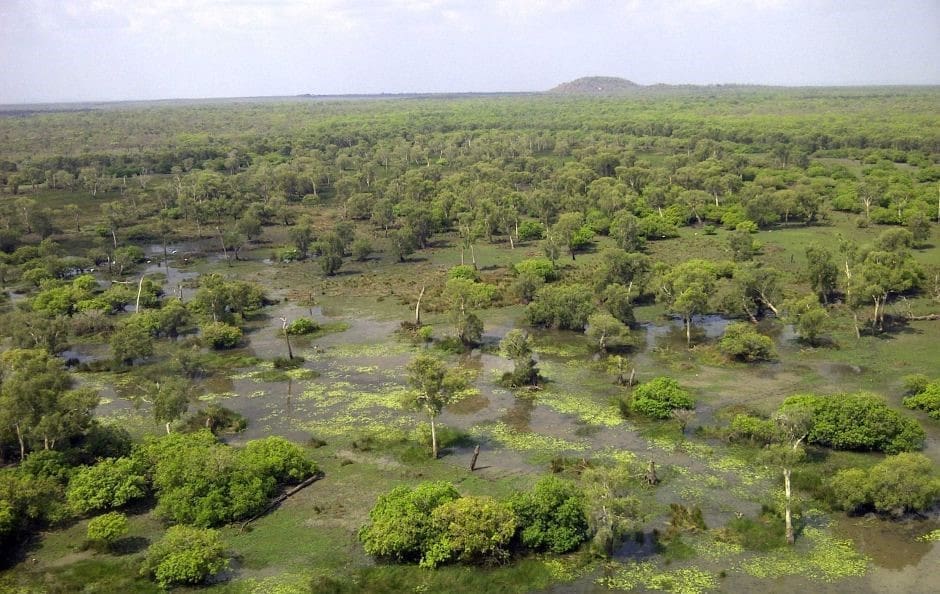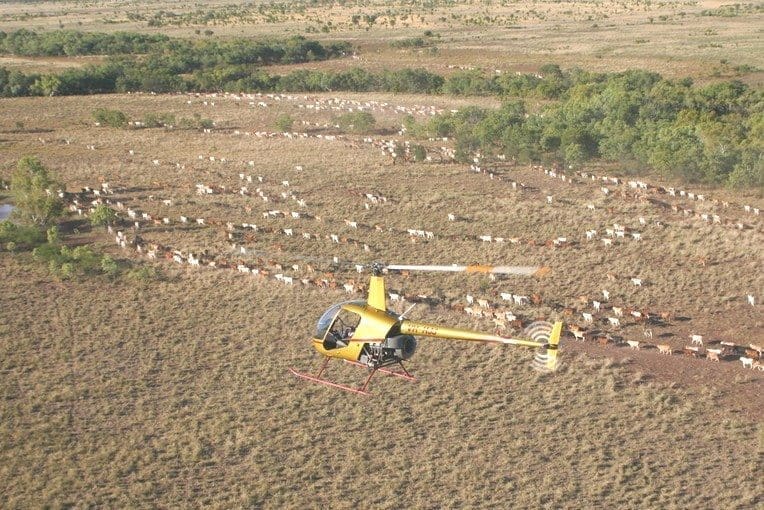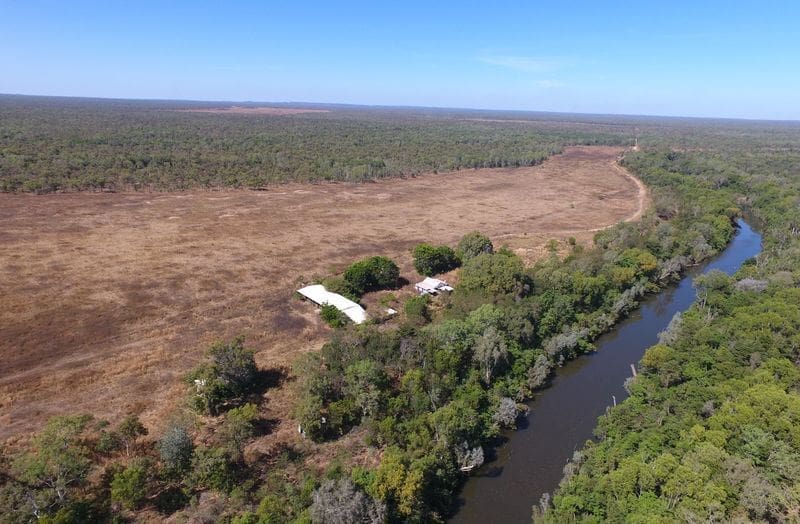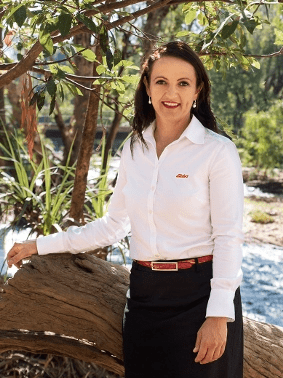
Elizabeth Downs, 205,000ha in the NT’s Douglas Daly region, was bought by Chinese interests with cotton growing in mind.
CATTLE or cotton? That is the question currently being asked in the Top End, with foreign investors who have snapped up a number of grazing properties waiting patiently for the opportunity to diversify into cotton or other farming interests.
The trend first surfaced five years ago when Chinese private sector interests Yiang Xiang Pty Ltd purchased the 205,000ha Elizabeth Downs Station, located in the Douglas Daly region of the Top End, 300km south-west of Darwin. At the time, it was the first-ever investment in Northern Australian extensive grazing assets by Chinese interests.
Selling agent Rawdon Briggs from Colliers International told Beef Central (in this earlier article) that every Chinese investor he had ever spoken to about potential investment in Australia was interested not only in the ‘now’, but also about what a property might be utilised for in future, in terms of cropping prospects or other diversifications such as aquaculture.
Since then, other NT pastoral investors have expressed a similar sentiment – they are happy to build their grazing operations for the present, but are hopeful of carrying cotton or other cropping initiatives forward some time in the future.
In August last year, the NT Government changed the NT Pastoral Land Act, but it chose to defer amendments that would allow stations to sub-lease for non-pastoral purposes. It is continuing to discuss the proposal with the NT Cattlemen’s Association and the Northern Land Council. Despite signalling an intention to have the matter resolved by Christmas, the matter is still on the table.
Should the amendments come into force, holders of pastoral leases will be able to make applications for a permit to use all or part of the land held under the lease for non-pastoral purposes – developing new income streams in tourism, aquaculture, agriculture or forestry, for example.
The amendments should provide pastoralists with greater certainty and confidence to explore and invest in longer term non-pastoral opportunities, and is also likely to result in an increase in activity in the sale and purchase of NT pastoral leases.

There is scope to develop flood-irrigated cropping on the 90,000ha cattle breeding enterprise Flying Fox Station near Mataranka in the NT
Similar long-term views
Several other offshore and domestic buyers have similar long-term views as Yiang Xiang Pty Ltd.
In September 2016, a subsidiary of the Hu family’s YK Group company purchased Florina Station, 50km west of Katherine.
The 57,000ha grazing property is modestly-sized by local standards, but presents the potential for irrigated cropping, having extended frontage to the Daly River and overlaying the Oolloo and Florina aquifers. There is a water licence of 1000 megalitres per year.
At the time, Alison Ross from Elders said the station’s access to water was a strong drawcard for the purchasers, as well its proximity to Darwin Port.
It has been revealed the owners grow 5000 hectares of cotton in China producing 100,000t a year and they have recently admitted they one day hope to grow cotton on Florina.
Another Top End property earmarked for cotton is the 89,580ha Mataranka cattle breeding enterprise Flying Fox Station, (pictured above) 540km south-east of Darwin.
In November last year, a Sydney-based solicitor paid more than $12 million (WIWO including 6500 head of Brahman cattle) for the property which is located in a reliable rainfall district, boasts Roper River frontage and 30,000ha of alluvial black soils (known as Kununurra clay) suited to pasture improvement and irrigation development.
Independent assessments by John Grabbe, who was responsible for developing NSW’s Cubbie Station – the largest irrigation property in the southern hemisphere – identified areas on Flying Fox that could trap water through the natural escarpments that run through the enterprise to flood irrigate the vast areas of the black soils for the development of cotton and various seed crops.
At the time, CBRE’s Geoff Warriner and the Territory Rural’s Andy Gray said the incoming purchaser was encouraged by the property’s potential and would more than likely develop the land for cotton at some stage.
Last month, CPC announced that it had sold Auvergne and Newry Stations in the NT’s Victoria River District to the Vietnam-based investment group Clean Agriculture & International Tourism. While not yet transacted, the incoming owners have indicated they will seek permission to diversify the properties for agriculture – mostly likely cotton with both featuring the desired open black soils.
Trials underway
While the above-mentioned purchasers sit and wait, three NT pastoral stations are undertaking commercial trials of cotton, including Tipperary Station, 160km south of Darwin. It has planted 20ha of dryland cotton and will plant a further 50ha under a centre-pivot.
The 9620ha cattle breeding and fattening enterprise Edith Springs, which recently changed hands, is also trialling 40ha of cotton. Located 45km north-west of Katherine, the freehold block has a 15km frontage to the Edith River and a 360 megalitre water licence.
Trial crops of genetically modified (GM) cotton have also been planted at the Department of Primary Industry’s Katherine Research Station.

Edith Springs Station
Cotton an anchor crop
Cotton is being pushed as a future anchor crop by the NT Farmers Association with the organisation working with producers to develop new rotational crops over the next five to 10 years.
The most likely candidates for growing dryland cotton are farmers on freehold land in the Douglas Daly and Katherine regions who are growing hay for live exporters.
Diversification a slow process
In fact, many primary producers in the Northern Territory are seeking to stimulate investment, diversification and development on pastoral land. They want the government to streamline the non-pastoral use and application processes to get positive results, which are currently bound up in red tape.
For existing industry players, approval for diversification and clearing is currently a slow process. Those involved in lodging the permits have expressed frustration at policy disagreements between the Primary Industry and Natural Resources departments, as well as recent changes to the Environmental Protection Act.
They claim the government supports cotton growing but is doing nothing to make it happen.
Government push attracts interest
Alison Ross from Elders Katherine said the NT government’s push to develop the north is attracting inquiry from eastern and southern states and from overseas.

Alison Ross, Elders Katherine
“Livestock production is a drawcard because the cost of land is cheaper per hectare and there’s a perception that water is abundant. As a result, many potential buyers are undertaking due diligence,” she said.
However many potential buyers remained cautious, and this was hindering investment.
“Despite amendments to the NT Pastoral Land Act, the application process for many is still too complex. On top of that, there are uncertainties about land clearing and development, environmental impacts, the availability of groundwater, the long-term viability of the live export trade, the future direction of the NT government and what changes a federal Labor government might make,” Ms Ross said.
There was also the added cost of developing a cattle station in the NT.
“It is significantly higher than other states due to isolation, fuel, machinery, material and transportation costs. Producers from New South Wales and Queensland appear keen to come to the NT, but the costs and the red tape are prohibitive, so we don’t hear from those potential investors again.”
Andy Gray from Territory Rural said domestic demand was being outweighed by international enquiry.
“There has been a wave of foreign interest from Asia and North America. Large tracts of land in the NT are attracting corporates keen to produce food. Vietnam has more than 95 million people to feed and just 9 million hectares of arable land.”
Mr Gray said more people than ever before were talking about agriculture in the Territory.
“Back in the 1980s, plans were underway to develop the Douglas-Daly for agriculture, but it never really got out of the blocks. People are setting their sights on the region again, and the fundamentals are very solid.”
“Historically there is safe rainfall, it has the right climate, the perfect soils, land that can be further developed and tens of millions of people north of Australia who want our product,” Mr Gray said.

For the life of me, I don’t understand why we aren’t looking at more sustainable crops for fibre like marijuana and bamboo. Marijuana cropping for fibre has been very successful as has bamboo. Both need much less water to grow than cotton and are more sustainable in response to nitrogen. When we look at diversification how about we look forward instead of looking backwards.
I hope that people can find alternative production off-takes to cattle, so they may diversify … and spread and mitigate risk … there’s far too much of it at times … and kisses may be catastrophic …😊
However, personally I’d be very careful of cotton and chemical-farming in the Top-End … for two main reasons:
1) Fragile Soils (which leach), combined with Heavy Tropical Rainfall, in a short Wet season,
2) It’s a ‘13-month’ crop: which is very hungry for water.
So, unless you have the right soils, are rotational-cropping with legumes to fix nitrogen in the soil, and have access to large volumes of replaceable irrigated-water supply … I’d think about other options around cash-cropping …
Stay away from mono-culture …
AND, beware of residual chemical into ground-water and therefore run-off …
There’s a bigger premium in rotational (pressure-on, pressure-off) livestock grazing … in smaller paddocks and adding more watering-points to increase available feed utilisation … arguably be carrying more than 25% more stock on the same land area … and within 5-years … IMO 😊
Just be careful that the Vendor has not included ‘potential-Value’ in the asking price …
Value today should be based on what is … of course, for the Investor, his perception of Value is all about the future … so if asking-price shows as ‘fully valued’, on potential, ensure to minus the Present Value of any Capex necessary, to arrive at that expected future point.
Knowing that for quality assets, there is nearly always a premium to pay.
As for Cotton … think … and re-think, again … 😊